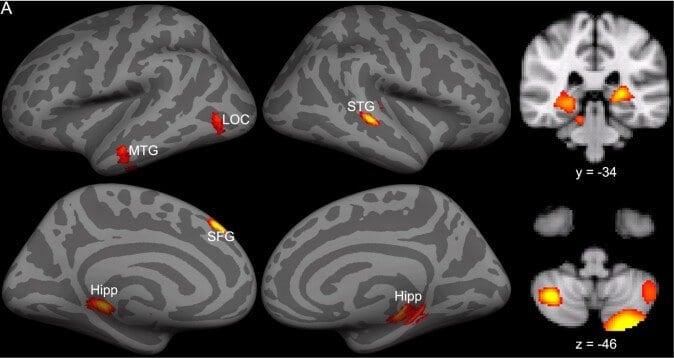A combination of brain scans and reading tests has revealed that several regions in the brain are responsible for allowing humans to read.The findings open up the possibility that individuals who have difficulty reading may only need additional training for specific parts of the brain — targeted therapies that could more directly address their individual weaknesses.“Reading is a complex task. No single part of the brain can do all the work,” said Qinghua He, postdoctoral research associate at the USC Brain and Creativity Institute, based at the USC Dornsife College of Letters, Arts and Sciences, and first author of a study on this research that was published in The Journal of Neuroscience on July 31.
The study looked at the correlation between reading ability and brain structure revealed by high-resolution magnetic resonance imaging (MRI) scans of more than 200 participants.
To control for external factors, the participants were about the same age and education level (college students); right-handed (lefties use the opposite hemisphere of their brain for reading); and all had about the same language skills (Chinese-speaking, with English as a second language for more than nine years). Their IQ, response speed and memory were also tested.
The study first collected data for seven different reading tests of a sample of more than 400 participants. These tests were intended to explore three aspects of their reading ability: phonological decoding ability (the ability to sound out printed words); form-sound association (how well participants could make connections between a new word and sound); and naming speed (how quickly participants were able to read out loud).
Each of these aspects, it turned out, was related to the gray matter volume — the amount of neurons — in different parts of the brain.
The MRI analysis showed that phonological decoding ability was strongly connected with gray matter volume in the left superior parietal lobe (around the top/rear of the brain); form-sound association was strongly connected with the hippocampus and cerebellum; and naming speed lit up a variety of locations around the brain.
“Our results strongly suggest that reading consists of unique capacities and is supported by distinct neural systems that are relatively independent of general cognitive abilities,” said Gui Xue, corresponding author of the study. Xue was formerly a research assistant professor at USC and now is a professor and director of the Center for Brain and Learning Sciences at Beijing Normal University.
“Although there is no doubt that reading has to build up existing neural systems due to the short history of written language in human evolution, years of reading experiences might have finely tuned the system to accommodate the specific requirement of a given written system,” Xue said.
He and Xue collaborated with Chunhui Chen and Qi Dong of Beijing Normal University; Chuansheng Chen of the University of California, Irvine; and Zhong-Lin Lu of Ohio State University.
One of the top features of this study was its unusually wide sample size, according to researchers. Typically, MRI studies test a relatively small sample of individuals — perhaps around 20 to 30 — because of the high cost of using the MRI machine. Testing a single individual can cost about $500, depending on the nature of the research.
The team had the good fortune of receiving access to Beijing Normal University’s new MRI center — the BNU Imaging Center for Brain Research — just before it opened to the public. With support from several grants, the researchers were able to conduct MRI tests on 233 individuals.
Next, the group will explore how to combine data from other factors, such as white matter, resting and task functional MRI, as well as more powerful machine-learning techniques, to improve the accuracy of individuals’ reading abilities.
“Research along this line will enable the early diagnosis of reading difficulties and the development of more targeted therapies,” Xue said.
The research was funded by the 111 Project of China (grant number B07008), the National Science Foundation of China (31130025), the Foundation for the Authors of National Excellent Doctoral Dissertations of China (201108) and the National Institute of Health (HD057884-01A2).



This headline is not news. I think you missed the point of the study.